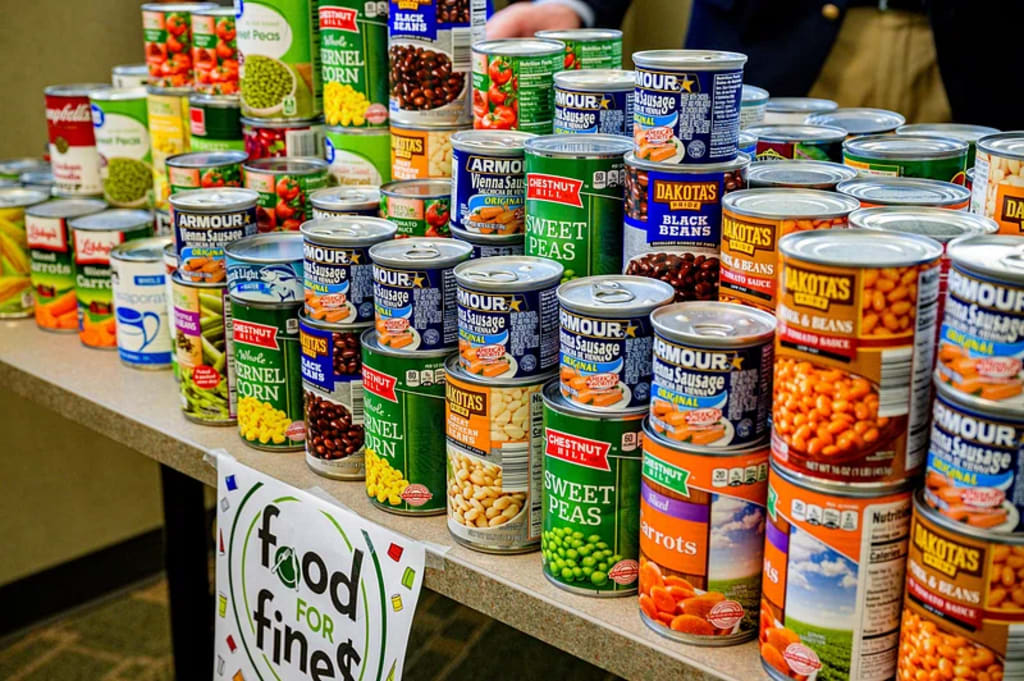Beyond Plastic: Everyday Foods That Are Contaminated With Plastic Which You Do Not Know.
The Shocking Truth About What You Eat

“How much plastic for dinner, sir?” And you, ma’am?” (This line is almost like a skit from Saturday Night Live). However, research proves that it is not so far from the truth.
In a report released in February 2024, 90% of the protein samples from animals and vegetables were found to contain microplastics, which are tiny polymer fragments that can range from less than 0.2 inch (5 millimeters) in size down to 1/25,000th of an inch (1 micrometer). The smallest particles that have a size of less than 1 micrometer are nano-plastics and must be measured in billionths of a meter.
A 2021 study reported that even vegetarians are not exempt from it. If the plastic particles are small enough, they can be taken up by the roots of plants and be trans-located through the plant to the stems, leaves, seeds, or fruit.
Salt is frequently packed in plastic. According to the research done in 2023, the coarse Himalayan pink salt mined from the ground was the most contaminated by microplastics, followed by black salt and marine salt. In addition, sugar is regarded as "a key way of human exposure to these micro-pollutants," as a study in 2022 shows.
For example, plastic tea bags which are used by many people can release great amounts of plastic. The researchers of McGill University in Quebec, Canada, who studied a single plastic teabags brewing process, found that it released about 11.6 billion microplastics and 3.1 billion nano-plastic particles into the water.
Even tea bags are made of plastic, which on average can release tons of plastic. Researchers from McGill University in Quebec, Canada discovered that brewing one plastic teabag in the water released 11.6 billion micro-plastic and 3.1 billion nano-plastic particles.
Additionally, rice is a villain. Research conducted by the University of Queensland shows that for every 100 grams (1/2 cup) of rice that people eat, they take 3 to 4 milligrams of plastic but the number grows to 13 milligrams per serving for instant rice. (Researchers reported that washing rice can reduce plastic contamination by up to 40%. Such washing also helps to reduce arsenic, which can be high in rice).
By the way, bottled water packaging is also a problem. A single liter of water, the content of two regular-size plastic bottles, was found to contain an average of 240,000 plastic particles from seven different plastics, including nano-plastics, in a March 2024 research.
Dangers to Human Health
Whilst microplastics have been detected in the human lung, maternal and fetal placental tissues, breast milk, and blood until recently there had been relatively limited research on how these polymers influence the functions and organs of the body.
Research in March 2024 revealed that the chances of having a stroke, heart attack, or death from any cause in the next three years were twice as high among people with microplastics or nano-plastics in their neck arteries than among people with no microplastics or nano-plastics in their arteries.
Nano-plastics are the most alarming type of plastic pollution that is considered to be the worst for human health, according to experts. That is because these little particles can enter individual cells and tissues in major organs and potentially interrupt cellular processes or store endocrine-disrupting chemicals such as bisphenols, phthalates, flame retardants, per- and polyfluorinated substances, or PFAS, and heavy metals.
"The chemicals that are used in the production of plastic are all contained in the plastic, so if a piece of plastic gets into us, it will be carrying those chemicals with it," Sherri "Sam" Mason, director of sustainability at Penn State Behrend in Erie, Pennsylvania, told CNN in a prior interview.
“And the body is warmer than the outside, so those chemicals are going to migrate out of that plastic and end up in our body,” Mason says.
"Some of those chemicals can be carried to your liver or kidney or even brain and even across the placental boundary and into an unborn child," she said.
“At the moment, the scientific community has not achieved any consensus on the possible health effects of nano- and micro-plastic particles. Hence, the media reports based on assumptions and conjecture are nothing but unnecessary scares for the public,” a spokesperson for the International Bottled Water Association, an industry association, told CNN previously.
This includes all types of proteins that are polluted by microplastics.
In the February study, which was published in Environmental Research, researchers looked at nearly a dozen of the most popular types of proteins, including beef, breaded and other types of shrimp, chicken breast and nuggets, pork, seafood, tofu, and several plant-based meat alternatives, such as nuggets, plant crumbles similar to ground beef and plant-based fish sticks.
Among the contaminated, shrimps, breaded shrimp had the most microplastics by far, at more than 300 micro-plastic pieces per serving. The second place was taken by plant-based nuggets, which have around 100 pieces per serving. This was followed by chicken nuggets, pollock fish sticks, minimally processed White Gulf shrimp, fresh caught Key West pink shrimp, and a plant-based fish-like stick.
The most uncontaminated proteins were chicken breasts, coming next to pork loin chops and tofu.
When the data is contrasted with the data on consumer consumption, researchers estimated that the average exposure of American adults to microplastics could be between 11,000 and 29,000 particles a year, with a maximum estimated exposure of 3.8 million microplastics per year.
Fruits and vegetables were found to be the food groups with the highest levels of plastics.
The world's oceans are polluted with plastics, and some of the research has already shown how these plastics are entering our food chain. On the other hand, as to vegetables and land animal proteins, such as cattle and hogs, the studies are fewer in number.
The study published in the Environmental Science journal showed that there were between 52,050 and 233,000 micro-plastic particles (that are 10 micrometers or less in diameter, which is about the size of a raindrop) in a variety of fruits and vegetables.
Apples and carrots reached the top of the list of the most polluted fruits and vegetables, having over 100,000 microplastics per gram. The smallest particles were found in carrots, while the largest quantities of plastic were found in lettuce, which was also the least contaminated vegetable.
Plastics are everywhere
It is estimated that there are 16,000 kinds of plastics in the world today, according to a recent analysis. A minimum of 4,200 of these can be considered to be “highly hazardous” to human health and the environment.
These chemicals, when they decompose in the environment, become microplastics and then nano-plastics, particles so small science could not see them for decades.
The latest research that employed the most advanced technology concluded that three well-known brands of water sold in the USA contained between 110,000 and 370,000 nano-plastics per liter, if not even more. One liter is the equivalent of approximately two 16-ounce bottled waters. (The authors did not name any specific brands of bottled water they investigated.)
Research with older technology used to be able to spot only about 300 nano-plastics and bigger microplastics in bottled water.
Ways to reduce plastic
The levels of pollution found in bottled water also reiterate the expert advice to drink tap water from glass or stainless steel containers to minimize exposure, Mason added. And that advice applies to other products, too, such as bottled drinks and other foods that come in plastic containers, she said.
"People, however, don't think of the plastics as shedding but they do," she said. “Just like humans shed skin cells constantly, plastics are shedding little bits of their plastic all the time, like when you open a plastic container for your store-bought salad or a cheese wrapped in plastic.”
Even though science is learning more about the plastics we ingest, there are several ways people can decrease the amount of exposure, experts say.
It is better to avoid eating anything that is placed in a plastic container. Seek food that is stored in jars, enamel, or aluminum foil.
Clothing made from natural fabrics and consumer products made from natural materials are the best.
Plastic is not meant to be heated in the microwave. Contrarily, use the stove or microwave to heat the food in glass instead.
If you can, try to eat as much fresh food as possible, and be cautious about purchasing processed and ultra-processed foods wrapped in plastic.
About the Creator
Vijay Mistry
I am an Internet Marketer, Video and Affiliate Marketer. I promote sell digital products online. I like sharing meaningful content online in different niches which adds value for the viewer.
Enjoyed the story? Support the Creator.
Subscribe for free to receive all their stories in your feed. You could also pledge your support or give them a one-off tip, letting them know you appreciate their work.






Comments
There are no comments for this story
Be the first to respond and start the conversation.